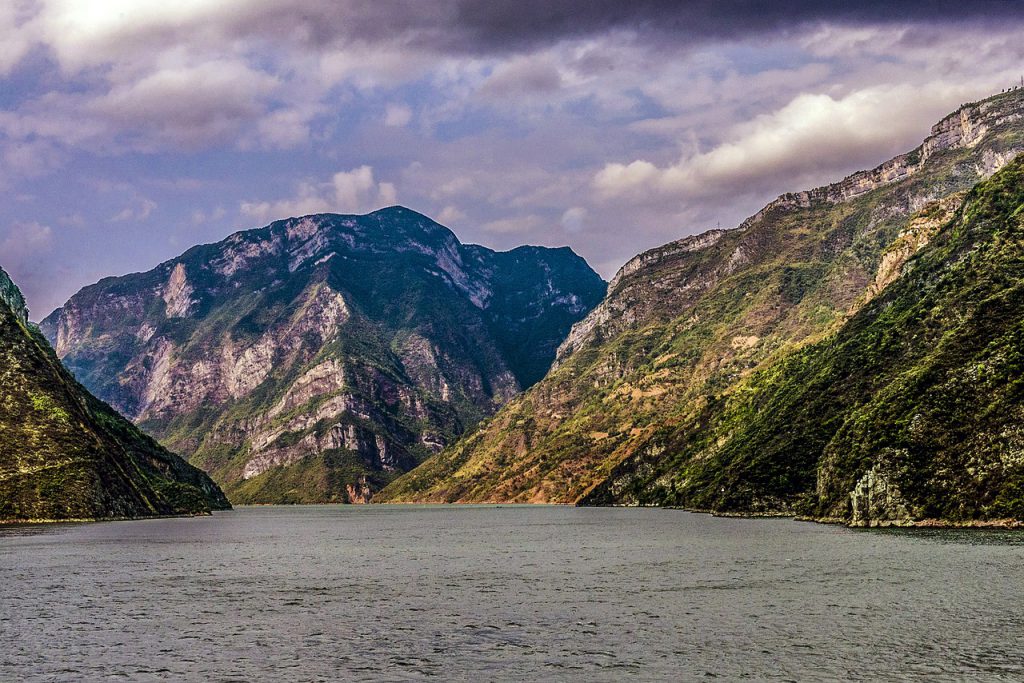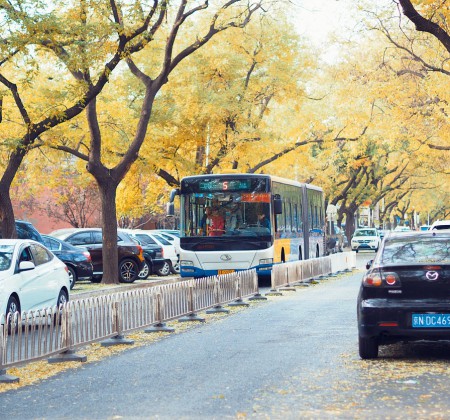Why Is China so Cold?
The winter in the northernmost part of China is very cold. if you travel there in winter, you will see snow all over the fields (the snow period lasts for 6 to 7 months, of which there is snow every day from November to March), and the earth is white. It’s like going to the North Pole.
So, are all countries in the same latitude in the world so cold?
No, it’s not. China’s winter is precisely the coldest place in the world at the same latitude. If the average temperature in January in China is compared with that of countries in the same latitude in the world, then the average temperature in Northeast China is 15-20 ℃ lower than that in the same latitude, 10-15 ℃ lower in Huang-Huai region, and 6~l0 ℃ lower in the south of the Yangtze River, even in the coastal areas of South China. The latitude of Huma Town, the northernmost county of Heilongjiang Province in China, is basically the same as that of the British capital London. However, the average temperature in Huma in January is-28.6C, while London is as high as 4.0C. London not only does not have a few meters of permafrost and snow, but also the winter grass is evergreen and the green water flows frequently, and the average temperature is like Hangzhou, which is 5000 li south of Huma in China. For example, the latitude of Tianjin in China is close to that of Lisbon, the capital of Portugal. The average temperature in Lisbon in January is nearly 10 ℃, which is the same as the northern part of Guangdong and Guangxi in China, with a lush spring light, while the January temperature in Tianjin is-4.2 ℃. Only the overwintering wheat in the fields and the pines and cypresses in the park make the earth dotted with green. In addition, the average temperature in January in Guilin, Guangxi, China is 8.0 ℃. Although there are green mountains and green waters and beautiful scenery here in winter, there are still 2 to 3 days of snow and frost in 9 ~ 10 days every year. At the same latitude, the average temperature in Miami in January is as high as 19.9 ℃, with rare frost and snow, and the coconut and betel nut trees on the seaside are high in the blue sky, which is a beautiful tropical scenery.
Why Does China Become the Coldest Country in the World at the Same Latitude in Winter?
Don’t we all have this kind of life experience? In winter, when the cold wave and strong wind stopped, the weather gradually warmed up in the warm sun, but the good times did not last long, often the second cold wave went south one after another, and the temperature dropped sharply again. If you point the average temperature of each day into a curve, the shape of the curve is like the waves of the sea or steep peaks. It can be seen that the reason why our country is very cold in winter is mainly because of the cold wave and cold air that often blows from the north in winter. If there were no cold wave going south and the temperature reached the zonal average, Harbin would be as warm as Xuzhou and Zhengzhou, Beijing would be warmer than Nanchang and Changsha, and Shanghai would be as warm as Nanning and Guangzhou without winter!
Where did these cold waves come from? They come from Siberia in the former Soviet Union. Some cold waves also come from the Arctic Ocean, but they also pass through Siberia. Siberia is the coldest place in the northern hemisphere in winter. In Verhoyansk and Oymyakon on the Arctic Circle, the average temperature in January is nearly-50 ℃, and the absolute minimum temperature is as low as 72 ℃. This cold air has blown to our country (although the temperature has risen somewhat along the way under the high sun and warm ground), of course, the eastern part of our country has become the “champion” of low temperature at the same latitude. However, most areas of southwest Sichuan and Yunnan provinces in China are in the dry and warm southwest westerly wind from southwest Asia in winter, and the climate is very warm: the average temperature in Kunming, which is 1891 meters above sea level, is as high as 7.8C in January. It is as warm as Guilin, which is only 1167 meters above sea level at the same latitude in the east, but under the control of cold wave cold air. Another example is Yuanmou, which is 1118 meters above sea level in the dry and warm valley of the Jinsha River in Yunnan Province. The temperature in January is as high as 15.5 ℃, but it is 9.7 ℃ higher than that in Linxian County, Hunan Province, which is only 185 meters above sea level at the same latitude. No, no, no. However, it is important to know that in winter, for every 1 km increase in temperature in southern China, the average temperature will decrease by as much as 4-5 ℃.
What Are the Routes of the Cold Wave Affecting China?
The cold wave affects a wide range of areas, ranging from hundreds to thousands of kilometers from east to west, but its thickness is generally only two or three kilometers. The cold wave moves at a speed of tens of kilometers per hour, which is about the same as that of a train. There are roughly three routes affecting the cold wave in our country: one is the West Road. This is the earliest and most frequent route in our country. The strong cold air starts from the North Pole, goes south through western Siberia, enters Xinjiang, and then invades North China, Central Plains and even southwest China along the Hexi Corridor. The second is the middle road. Strong cold air from Siberia’s Lake Baikal and Mongolia, through China’s Inner Mongolia Autonomous region, into North China to the southeast coastal areas. The third is East Road. The cold air flows south from the northeast of Siberia, sometimes through the east of our country, sometimes through the Sea of Japan and the Korean Peninsula, invading the eastern coast of our country. The main force of the cold wave heading south from this route to the east is generally not very strong and the number of times is not very high.
How Is the Cold Wave Formed?

China is located in the southeast of Eurasia. To the north from China is Mongolia and Siberia in Russia. Siberia is a place with a very cold climate. If you go further north, you will reach the northernmost region of the earth-the North Pole. It is colder and has a longer cold period than Siberia. It is from those places that the cold wave affecting China is formed.
Located in the Arctic at high latitudes and the Siberian and Mongolian plateaus, the ground receives little heat from the sun because it is oblique to the sun all the year round. Especially in winter, when the sun’s light moves southward, the angle of sunlight in the northern hemisphere is getting smaller and smaller, so the ground absorbs less and less heat from the sun, and the temperature of the ground surface becomes very low. In winter in the Arctic Ocean, the temperature is often below-20 ℃, and the lowest can reach-60 ℃-70 ℃. The average temperature in January is usually below-40 ℃.
In the Arctic, due to the weak sunlight, the ground and atmosphere get less heat, so it is icy and snowy all the year round.
In winter, when the direct position of the sun crosses the equator and reaches the southern hemisphere, the cold degree in the Arctic increases and the range expands, and the temperature is generally below minus 40 ℃-50 ℃. A large range of cold air masses gather to a certain extent, and under the action of appropriate upper atmospheric circulation, they will invade southward on a large scale and form cold wave weather.
As the temperature in the Arctic and Siberia is very low, the density of the atmosphere will greatly increase, and the air will continue to contract and sink, increasing the air pressure, thus forming a powerful, deep and wide cold high pressure air mass. When this cold and high-pressure force is strengthened to a certain extent, it will be like the sea tide that broke the dike, plunging thousands of miles and surging toward China. This is the cold wave.
After each cold wave breaks out, the cold air in Siberia decreases by part, and so does the air pressure. But after a period of time, the cold air gathered and piled up again, giving birth to a new outbreak of cold wave.
Source of cold air:
- To the west of SHKP Island.
- On the ocean east of SHKP Island.
- Iceland is on the south ocean.
Cold wave key area: according to the statistics of the Central Meteorological Observatory, 95% of the cold air passes through central Siberia and accumulates and strengthens there, which is called the cold wave key area.
There are three main ways to invade China:
- (1) West Road: entering Xinjiang, China from western Siberia and advancing southeast through the Hexi Corridor;
- (2) Middle Road: after entering China from central Siberia and Mongolia, it moves south through Hetao and Central China;
- (3) East Road: enter Northeast China from eastern Siberia or eastern Mongolia, and go south through North China;
- (4) East Lujiaxi Road: the cold air on the East Road goes south from the lower reaches of the Hetao, and the cold air on the West Road goes down from the southeast of Qinghai. The two cold air often converges on the eastern side of the Loess Plateau, and the confluence of the Yellow River and the Yangtze River causes a wide range of rain and snow. Then the two cold air merge southward, resulting in strong winds and obvious cooling.
Why Can’t the Cold Wave in China Bring Frontal Rain in Winter?
A strong cold front moves south in winter, forming a cold wave. However, in winter, the air in northern China is generally dry and less water vapor, so it is not easy to form rain and snow weather. If the warm air in front of the front is relatively humid, it may also form a snowstorm.









